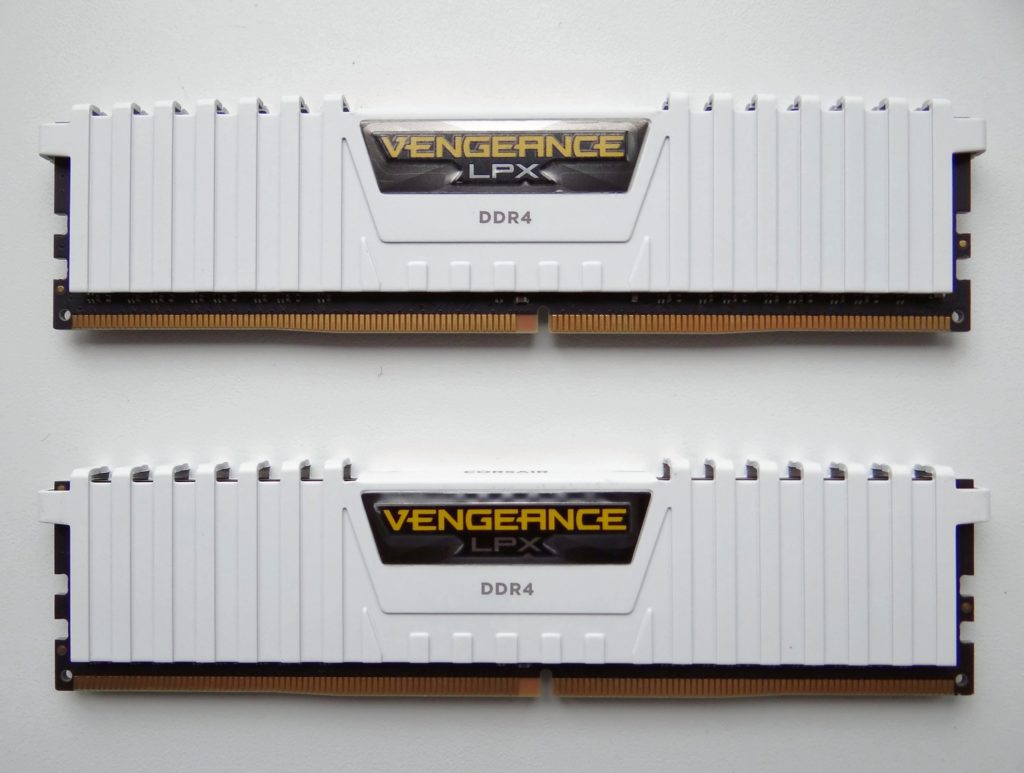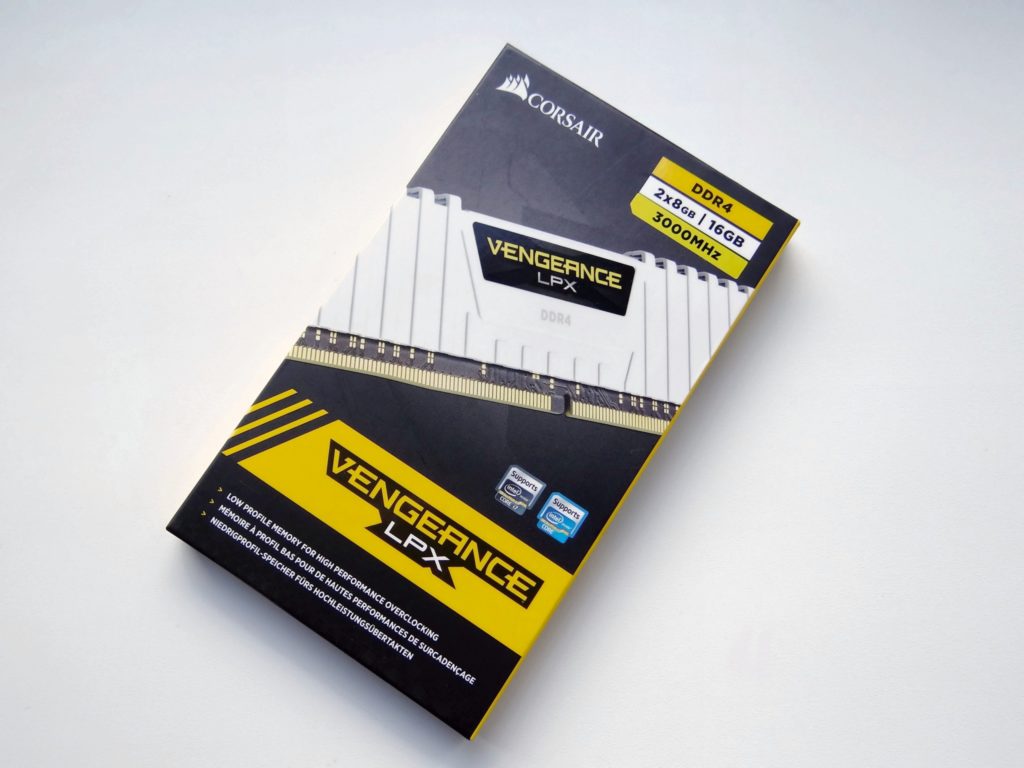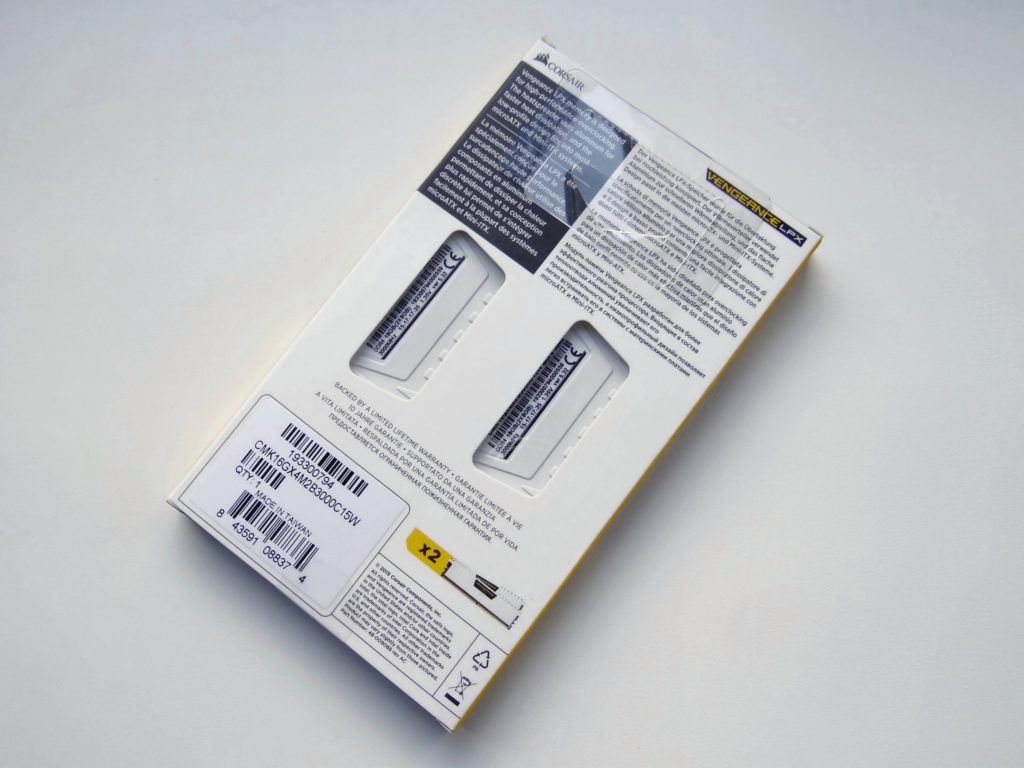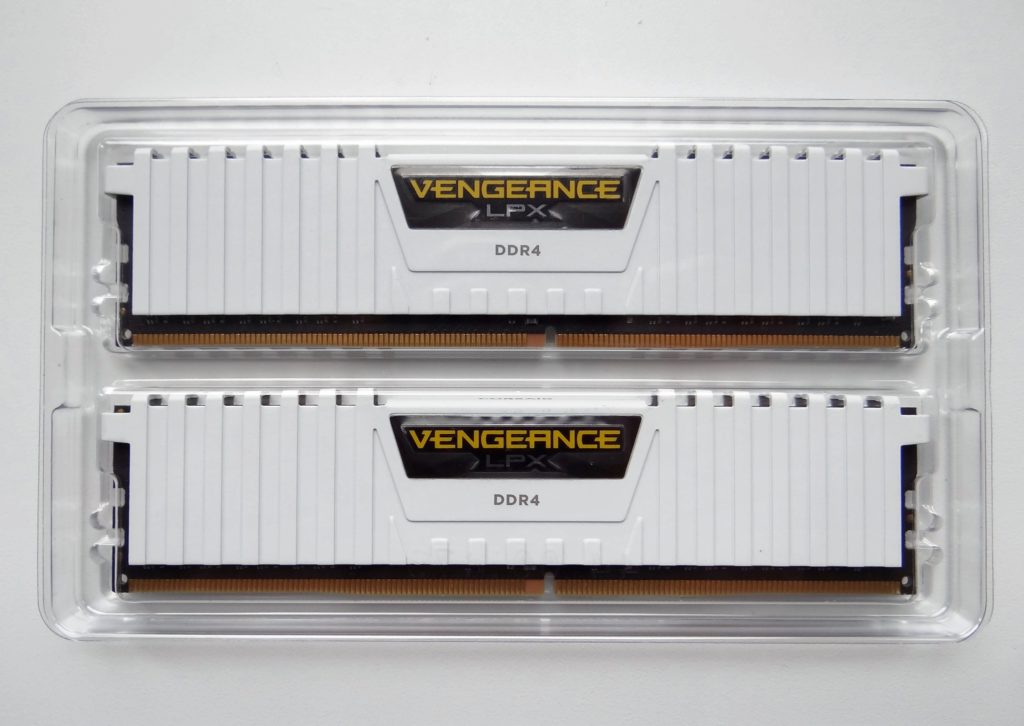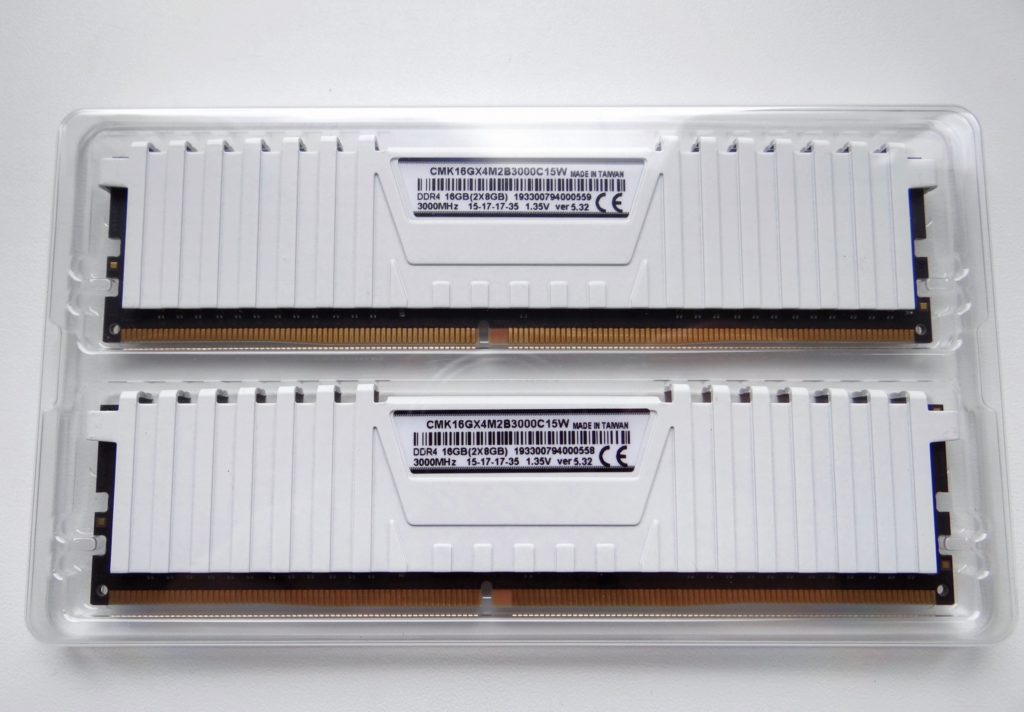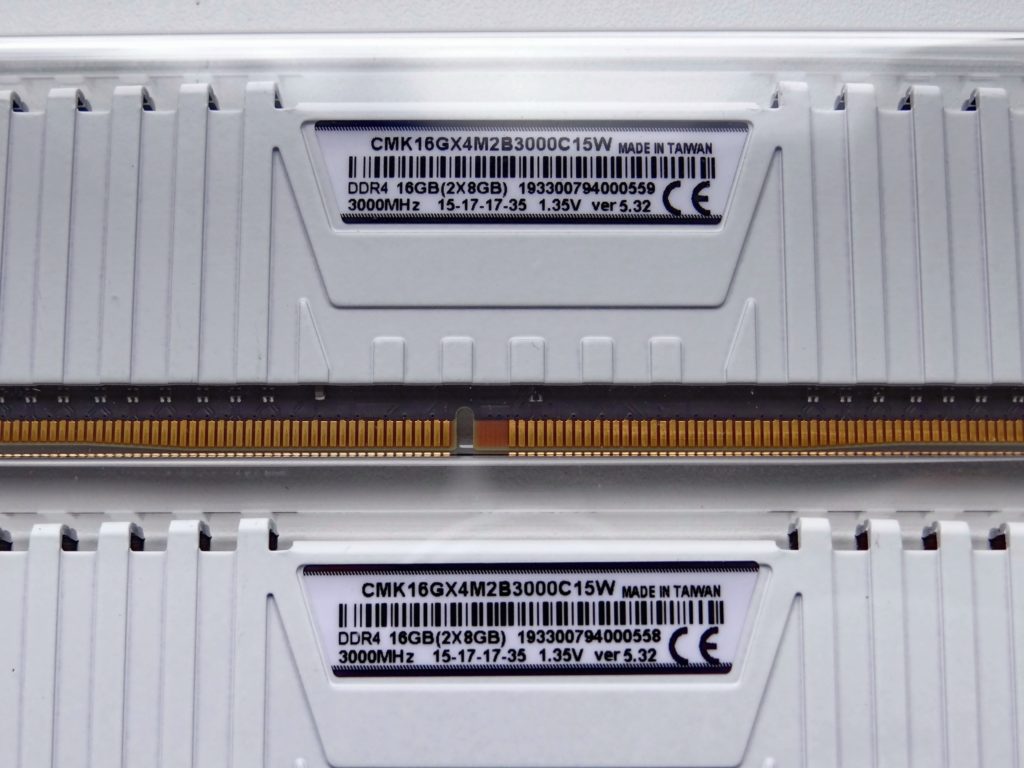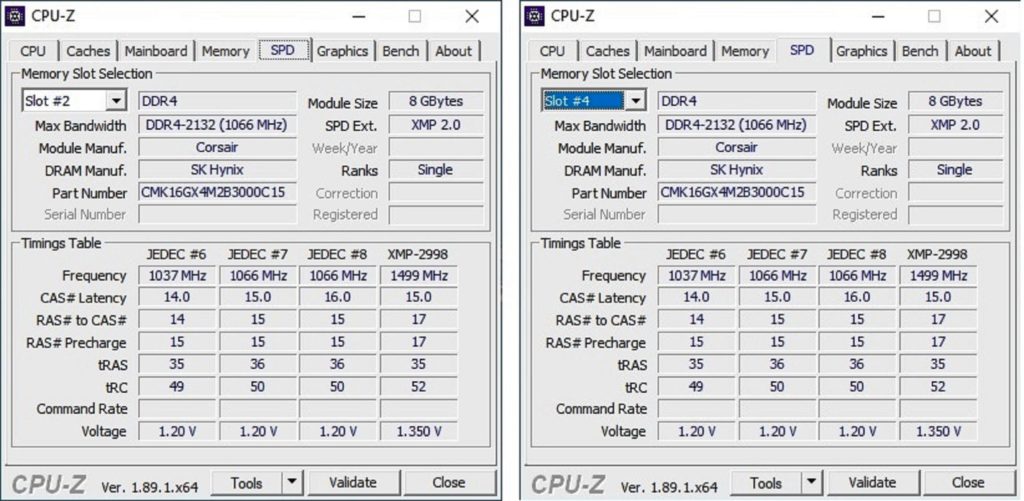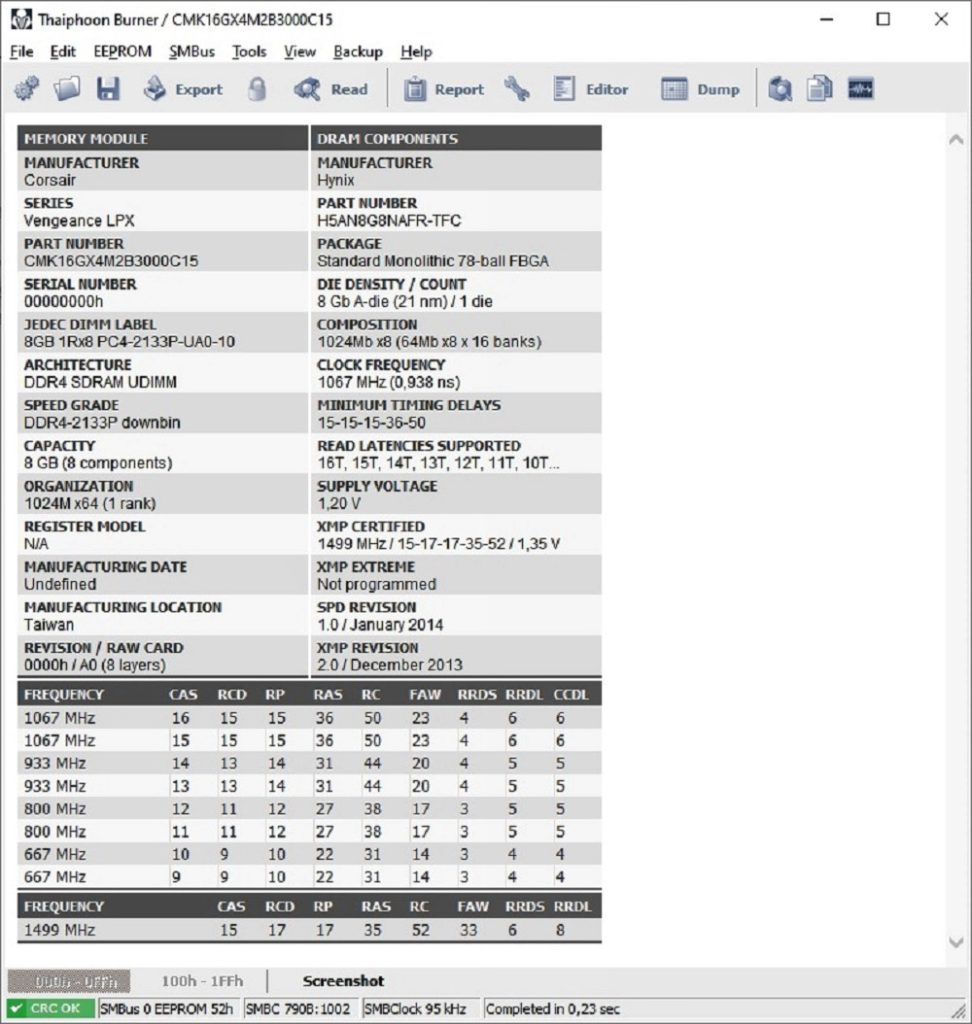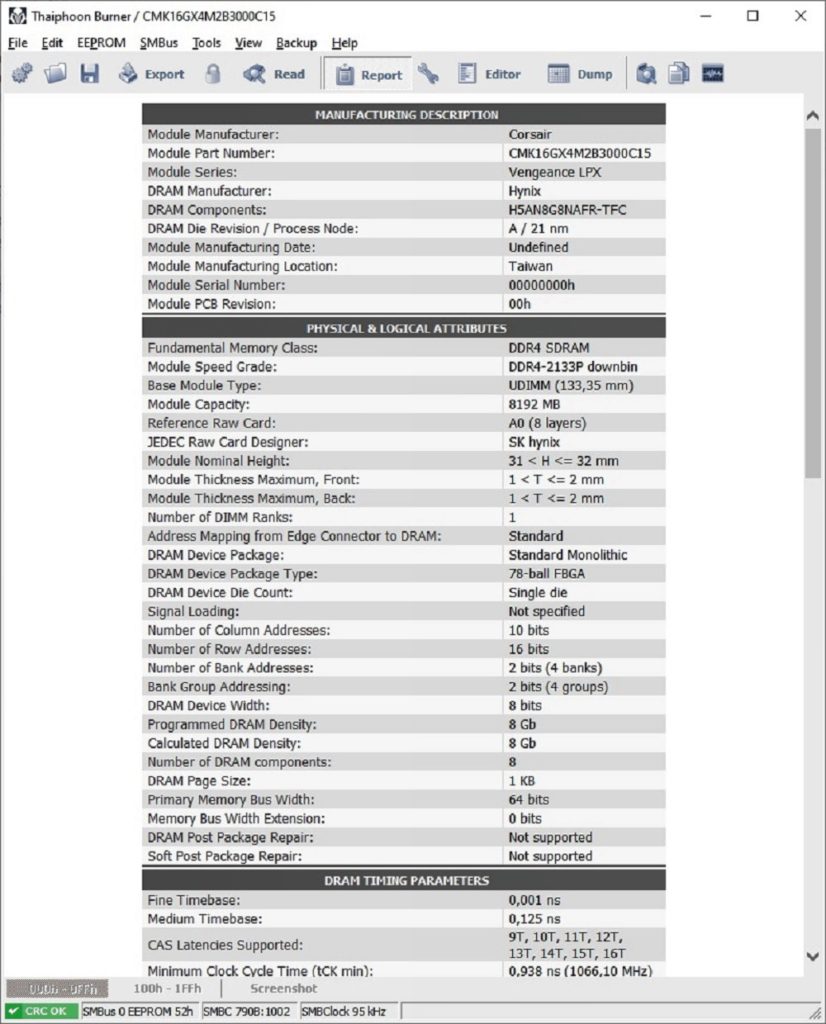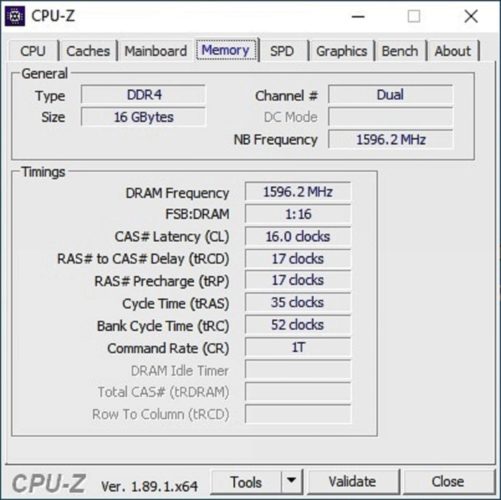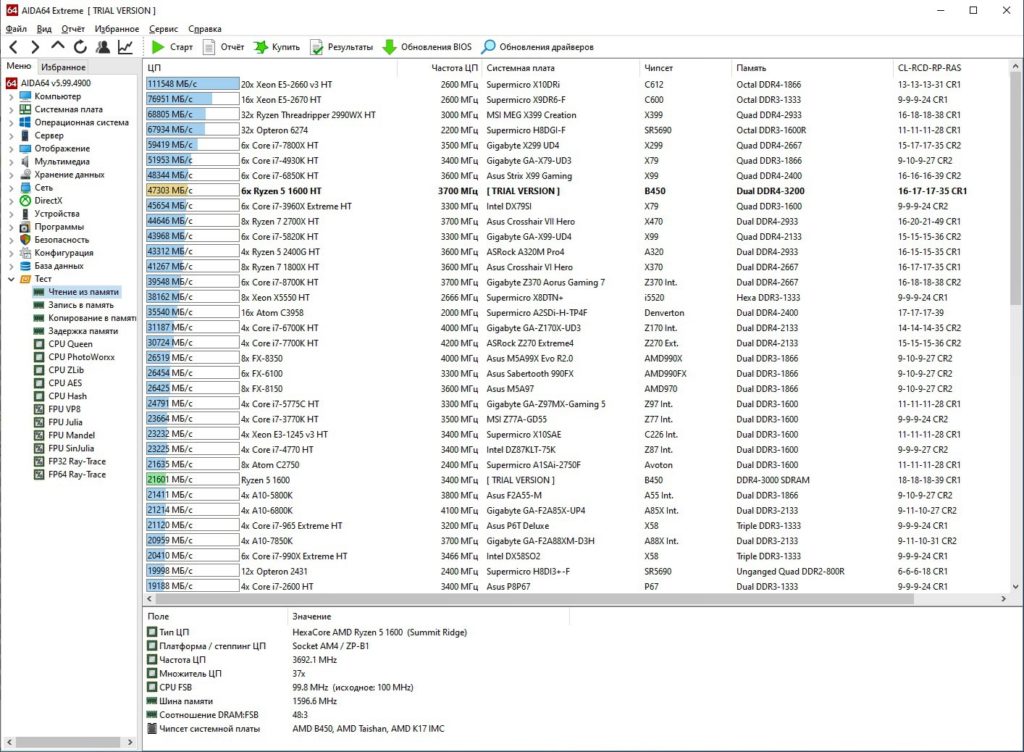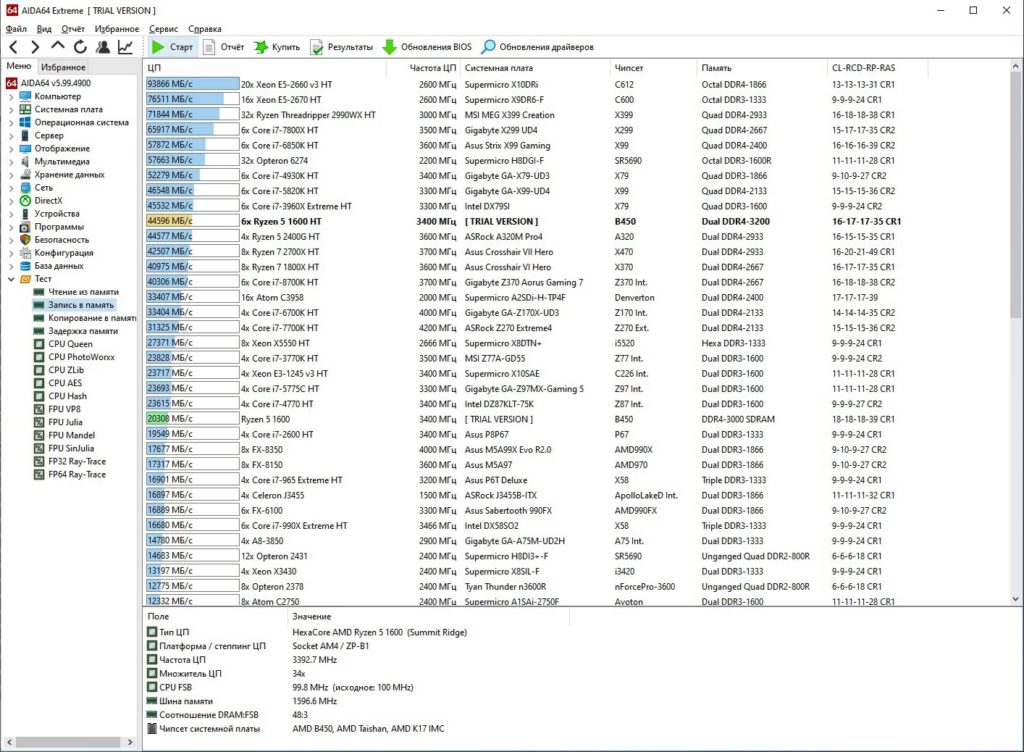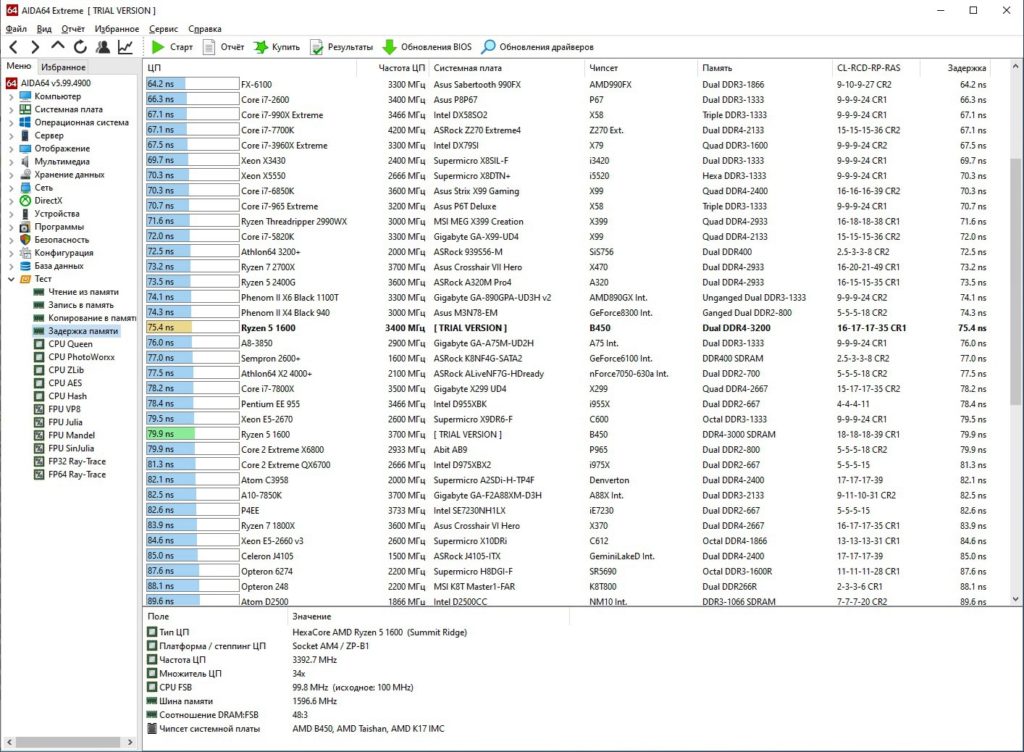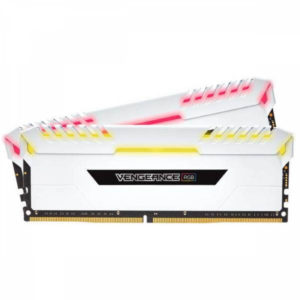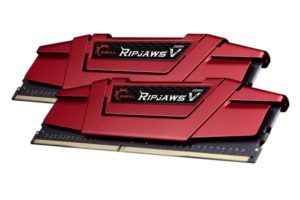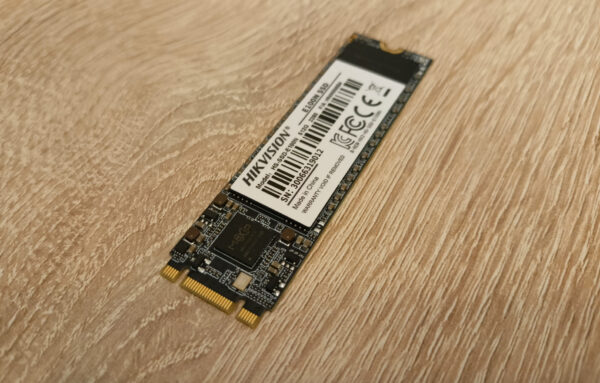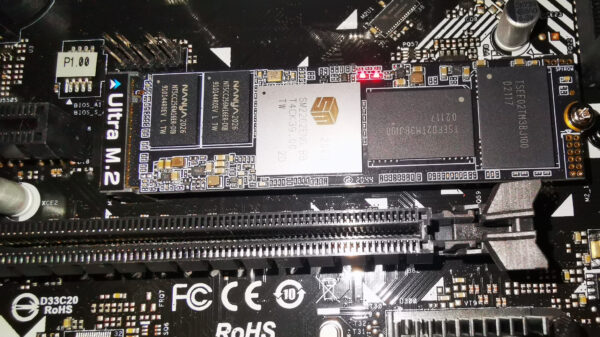Review on Corsair DDR4 16Gb (2x8Gb) 3000MHz PC-24000 Vengeance LPX white CMK16GX4M2B3000C15W
5 min readMy computer upgrade came at a period of very high prices for RAM, this was the reason that then only one DDR4 module was purchased, with the intention of acquiring a similar one later. The next year I spent studying DDR4 tests and realized that ALL manufacturers assemble memory modules according to the principle of “soldering from what is”, and modules with the same letters and numbers in the names may contain chips from different manufacturers and various revisions. That is, it seemed very difficult to buy a second module identical to an existing one (when buying in an online store, you won’t be able to know in advance which version will be delivered to you).
In this regard, it was decided to buy a set of modules 2 x 8 GB, for organizing the memory in dual channel mode.
The specifications of the RYZEN 5 1600 processor and the AMD B450 motherboard provided for a maximum memory frequency of up to 3000 MHz, which predetermined the choice of module frequency. The selection criteria were reviews of other customers, in which it was noted that the modules are quite problem-free. Also, it was important for me that these modules are low, since the installation was planned in a low-profile case (92 mm high) with a horizontally located processor cooler. The presence of a radiator was optional, but desirable, since the priority in the assembled computer was reliability (the radiator provides protection of chips from static, mechanical protection, and finally, it lowers the temperature a bit. 🙂 Since the previous DDR4 module was CORSAIR, which has proven itself from the best side,
There is no need to describe the packaging in words, everything is visible in the photos.
It’s a little pinned how CORSAIR advertises that the radiator is made of aluminum. On the package it is written literally: “Aluminum, which is part of the heat sink, increases its (ie, module) productivity.” So what is the secret of high performance?!
Inside the cardboard packaging, the modules are packed in a plastic blister.
The labels of the modules show their main characteristics. The version of these modules is 5.32. The first digit of the version indicates the manufacturer of the chips on which the modules are assembled. In this case, it is 5 – Hynix (2 – Elpida, 3 – Micron, 4 – Samsung, 8 – Nanya).
The CPU-Z screenshot shows the standard operating profiles of both modules.
The standard JEDEC profile sets the frequency to 2133 MHz with a supply voltage of 1.2 V modules, and the XMP profile specifies a frequency of 3000 MHz with an increased supply voltage of 1.35 V. In other words, you can overclock this module “automatically” without applying a brain to it , but simply by clicking on the corresponding item in the BIOS.
You can view the SPD data of these modules using the Thaiphoon Burner program in the READ tab, in more detail in the REPORT tab.
You can see that:
- installed Hynix memory chips revision A-die;
- chips are defined as DDR4-2133;
- modules have a peer-to-peer structure on 8 chips;
- uses an 8-layer printed circuit board;
- development date 2013-2014;
- there is no second XMP Extreme profile, which means there is free space where advanced users can write their XMP profile.
The inclusion of the XMP profile brought the first surprise – at a frequency of 3000 MHz, timings 16-17-17 were set, instead of the declared 15-17-17. All attempts to use the pens to set BIOS timing 15 caused the computer to freeze. Hmm, ah, I thought, and in my mind, information began to pop up that the memory controllers in AMD processors for some reason are not very supportive of odd timings. Considering the long-standing development of modules, I thought that when they were developed, RYZEN processors simply did not exist yet, which means that the modules were not tested for compatibility with them. Sadly … But since I can’t lower the timing, then you need to try to raise the frequency. I installed the frequency 3200 MHz in the RyzenMaster program – everything started, ran the RAM test in Windows 10 – without failures. As a result, I received modules with a frequency of 3200 MHz and with timings of 16-17-17, which exceeds the more expensive standard modules of 3200 MHz with timings of 16-18-18. This configuration completely satisfied me, since the RYZEN processors respond very well to an increase in the memory frequency.
Performance testing of this kit was carried out in the AIDA program. Since I am not a professional tester, I do not have memory sets for comparison, but I want to note that the memory in the system is synchronized, and therefore its performance is tightly tied to the operating frequencies and timings and does not depend on the brand name on the module. And all the differences in the speed of various modules shown in synthetic tests very quickly turn into minimal differences in practical applications.
My interest was in confirming the feasibility of the cost of a dual-channel memory kit compared to single-channel. We compared this DDR4 kit overclocked to 3200 MHz (yellow in the diagram) and a single CORSAIR DDR4-2400 module dual-rank, overclocked to a frequency of 3000 MHz with timings 18-18-18, on Micron chips, with a supply voltage of 1.2 V ( green on the chart). Naturally, when comparing the readings, it is necessary to take into account the frequency difference of 7%. So…
In the READ mode, the superiority of “yellow” in memory bandwidth is 2.19 times.
In REC mode, the superiority of “yellow” in memory speed is 2.2 times.
Delays – win yellow by 4.5 ns. Obviously, the latency test affects the lower timings of the DDR4 kit compared to a single module.
So, “Captain Evidence”, the memory bandwidth is directly proportional to the width of the bus, that is, the operating mode. First of all, two-channel mode is necessary when processing large amounts of data, for example, video editing. If you have a processor with an integrated video core that uses part of the RAM as video memory, then increasing the memory bandwidth will directly increase the performance of the video core. The speed of video games can also increase if you use a separate video card with insufficient built-in video memory. If you use the computer only for office tasks and the Internet, then you are unlikely to feel at least some benefit from the dual-channel mode.
It was interesting how efficient the cooling system of the modules works, because they work in the standard acceleration mode with a supply voltage of 1.35 V (remember – the power consumption is proportional to the square of the voltage and directly proportional to the frequency). At maximum load, the temperature of the radiators is slightly warmer than the temperature of the hand – excellent.
Final conclusions:
- Good kit for dual channel application;
- Has not very good application specifics with 1st generation RYZEN processors;
- Pretty good overclock in frequency, with good timings;
- The low-profile form factor is optimally suited for placement in small buildings where a maximum of free internal space is required for normal convection of air flows.
The article is written on the basis of materials of this site.
